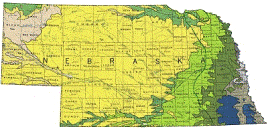US Geological Survey
Document Type
Article
Date of this Version
2014
Citation
Environmental Pollution 193, 2014
Abstract
Pharmaceutical contamination of shallow groundwater is a substantial concern in effluent-dominated streams, due to high aqueous mobility, designed bioactivity, and effluent-driven hydraulic gradients. In October and December 2012, effluent contributed approximately 99% and 71%, respectively, to downstream flow in Fourmile Creek, Iowa, USA. Strong hydrologic connectivity was observed between surface-water and shallow-groundwater. Carbamazepine, sulfamethoxazole, and immunologically related compounds were detected in groundwater at greater than 0.02 mg L^-1 at distances up to 6 m from the stream bank. Direct aqueous-injection HPLC-MS/MS revealed 43% and 55% of 110 total pharmaceutical analytes in surface-water samples in October and December, respectively, with 16% and 6%, respectively, detected in groundwater approximately 20 m from the stream bank. The results demonstrate the importance of effluent discharge as a driver of local hydrologic conditions in an effluent impacted stream and thus as a fundamental control on surface-water to groundwater transport of effluent-derived pharmaceutical contaminants.



Comments
U.S. Government work